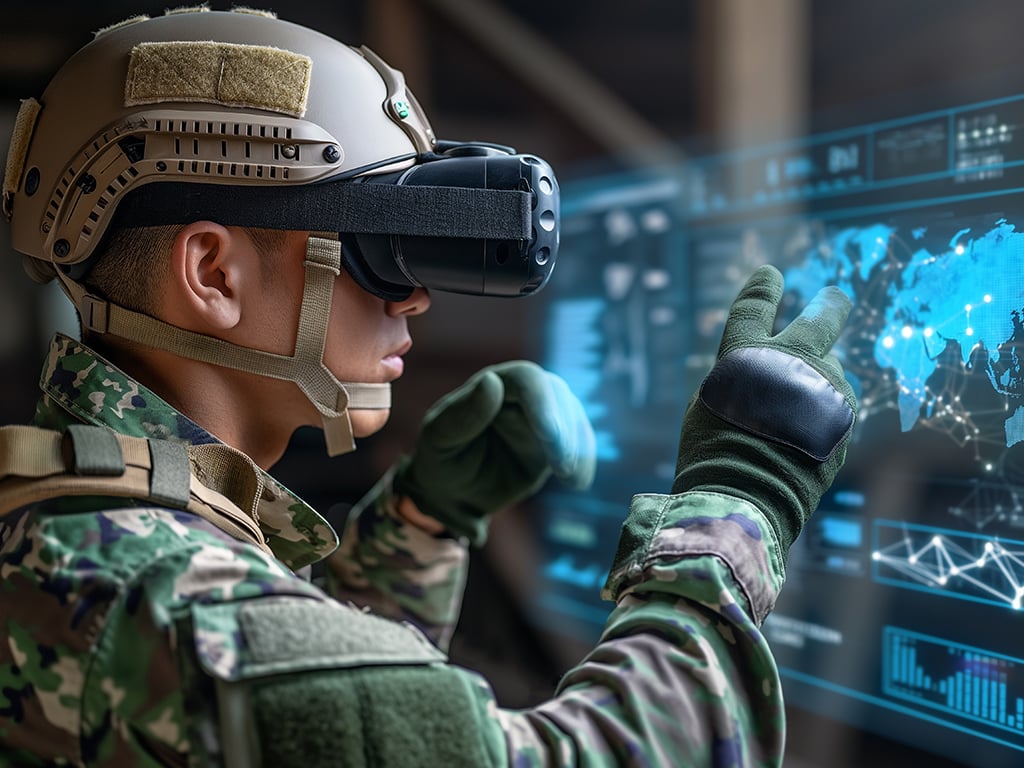As the U.S. Department of Defense (DoD) continues to make artificial intelligence (AI) a key segment of national security, turning cutting-edge research into real-world tools remains a major hurdle. AI-powered systems have the potential to reshape defense operations – whether it’s through autonomous vehicles, predictive maintenance, faster intelligence gathering, or better battlefield decision-making. But unlocking that potential requires a computing infrastructure that’s as agile, secure, and scalable as the missions it supports.
This is especially true at the tactical edge, where every second counts and success depends on speed, precision, and resilience. Running AI in these high-stakes environments isn’t just about having the right algorithms – it also means having the right architecture. That’s where hybrid cloud comes in: bridging the gap between supercomputing and deployed systems, without compromising security or performance.
The Infrastructure Imperative for AI-Driven Defense
AI adoption across the DoD has surged in recent years, accelerated by strategic initiatives such as the Combined Joint All-Domain Command and Control (CJADC2) and the Replicator Initiative. In 2025 alone, the DoD allocated $25.2 billion – about 3% of its $850 billion budget – for programs incorporating AI and autonomous systems.
Turning AI from a research concept into field ready operations isn’t easy. Agencies face a host of technical and regulatory challenges, including sensitive data, limited bandwidth, inconsistent access to compute resources, and strict cybersecurity requirements.
Traditional high-performance computing (HPC) environments often don’t offer the flexibility to adapt to rapidly shifting mission needs. Meanwhile, commercial cloud platforms, while flexible, don’t meet federal Impact Level 5 (IL5) security requirements out-of-the box. That’s where hybrid, IL5-authorized platforms are starting to make a real difference – filling the gap between capability and compliance.
To move AI from the lab to the field, infrastructure must support real-time inference, dynamic retraining, and model sharing across diverse environments. This means meeting the high-throughput demands of training and simulation – while enabling the low latency and resource efficient execution required at the edge.
A new generation of IL5-authorized hybrid cloud platforms blend the performance of on-premises DoD supercomputers with the scalability of commercial cloud – all while meeting the rigorous controls for handling Controlled Unclassified Information (CUI) and International Traffic in Arms Regulations (ITAR) workloads.
One such platform, recently granted IL5 Provisional Authorization by the Defense Information Systems Agency (DISA), enables defense teams to securely deploy AI and simulation workloads across AWS, Azure, Google Cloud, and the DoD High Performance Computing Modernization Program (HPCMP) Defense Supercomputing Resource Centers (DSRCs). Its inheritance-ready security posture eliminates redundant compliance reviews, slashing time-to-operational-readiness from months to minutes.
The benefits of this model go beyond just security. Hybrid platforms unlock a range of capabilities that directly support mission-enabling benefits:
- Seamless Data Movement: AI models trained in secure cloud environments can be deployed to forward-operating systems without leaving the IL5 boundary. This enables continuity between development, testing, and deployment phases.
- Elastic Compute Scaling: Mission teams can dynamically “burst” workloads across cloud and supercomputing resources based on real-time needs—whether for autonomous navigation simulations, ISR data analysis, or rapid response planning.
- Cost and Resource Efficiency: Infrastructure-as-code and fine-grained usage tracking—down to ~3-minute billing intervals—give federal agencies unprecedented visibility and control over their compute spend, a vital advantage in budget-constrained environments.
- Rapid Deployment: Pre-authorized environments allow mission owners and integrators to spin up secure AI-ready infrastructure in minutes, bypassing traditional provisioning bottlenecks.
The promise of hybrid AI is already being realized across several critical domains:
- Autonomous Systems: Model training for self-piloting drones or unmanned vehicles demands massive compute power. Hybrid platforms enable training at scale in the cloud, with real-time inference capabilities deployed securely at the tactical edge.
- Intelligence, Surveillance, and Reconnaissance (ISR): Processing sensor data requires low-latency, mission-specific models. Hybrid environments ensure ISR workflows remain agile and secure across distributed teams and environments.
- Predictive Maintenance: AI-driven diagnostics can preempt equipment failure in theater. Hybrid cloud allows algorithms to learn from fleet-wide data and push updates to localized systems—ensuring reliability in contested environments.
Turning AI Potential into Tactical Advantage
As the DoD accelerates its digital modernization efforts, the need for infrastructure that is scalable, secure, and operationally resilient in real world operations is only becoming more critical. IL5-authorized hybrid cloud environments represent a major step forward, offering a trusted foundation for advancing mission-driven AI innovation.
These platforms make it possible to take AI out of the lab and into the field, transforming a promising concept into a real-world advantage.
In this evolving landscape, hybrid cloud isn’t just an IT upgrade – it is a tactical tool with operational impact. When every second counts and data drives decisions, AI powered by secure hybrid cloud gives the DoD the edge it needs to act at the speed of relevance.
About the Author
 Matt Archuleta is Vice President of Operations at Parallel Works, provider of the ACTIVATE control plane for hybrid multi-cloud computing resources. A decorated U.S. Army Green Beret and investor, Archuleta brings mission-driven leadership, deep strategic insight and a proven track record of scaling operations.
Matt Archuleta is Vice President of Operations at Parallel Works, provider of the ACTIVATE control plane for hybrid multi-cloud computing resources. A decorated U.S. Army Green Beret and investor, Archuleta brings mission-driven leadership, deep strategic insight and a proven track record of scaling operations.
Archuleta served as a U.S. Army Special Forces officer and Infantry officer, commanding elite teams in West Africa and the Middle East. He was awarded the Bronze Star for his leadership in Afghanistan and has been featured in The New York Times and Poets & Quants for his contributions to both national defense and business.
Archuleta holds an MBA from the Yale School of Management, an MPA from Harvard Kennedy School, and a B.S. from the U.S. Military Academy at West Point. He has also served as an innovation officer for the Connecticut Army National Guard.
Matt can be reached at [email protected], and at www.parallelworks.com.


